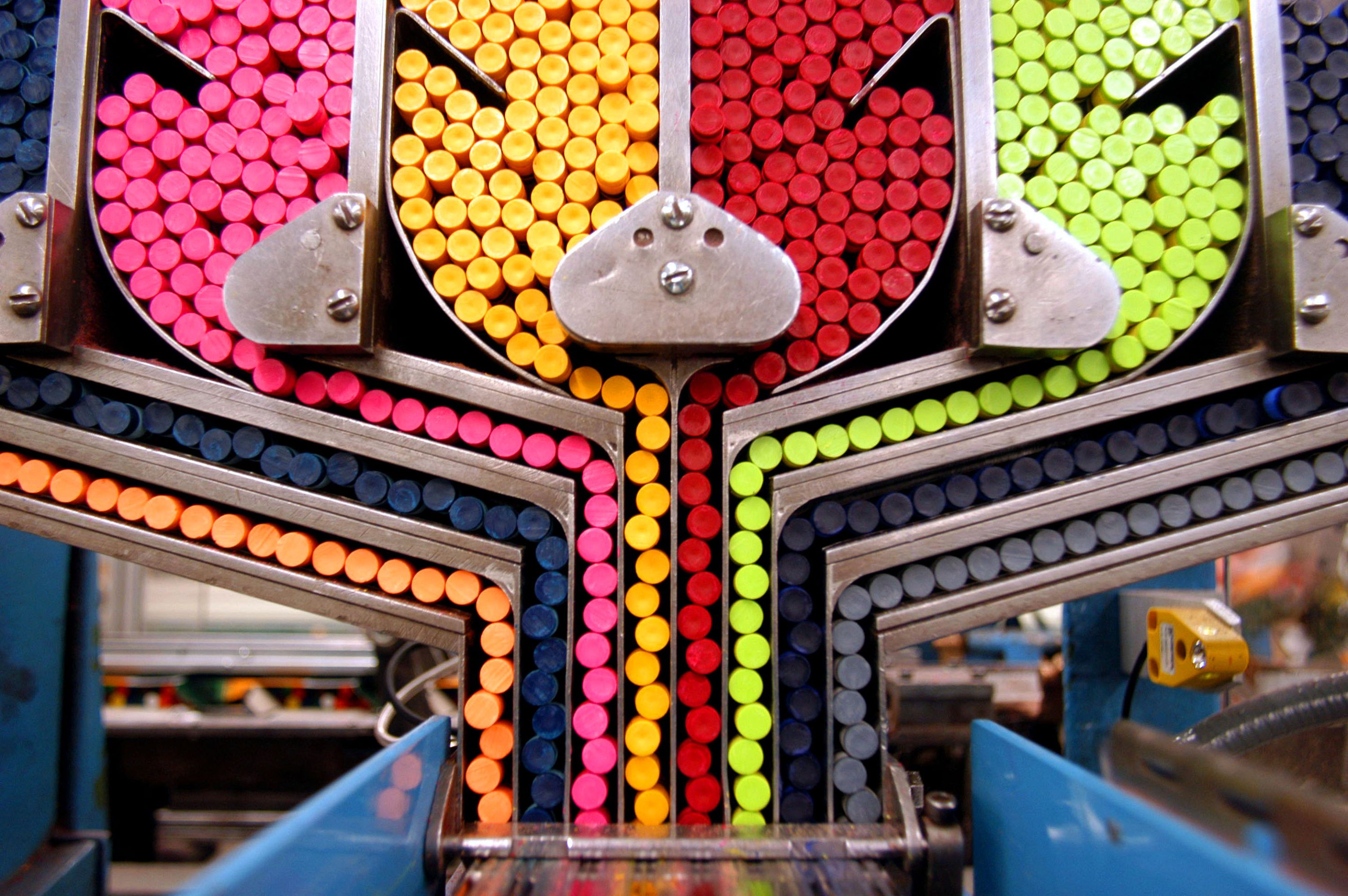By Irina Ivanova
Against this backdrop, though, Crayola—maker of the world’s most widely sold crayon—took a different tack. Pete Ruggiero, at the time an operations executive, thought the children’s art supply maker could be more efficient by staying close to home.
“I kind of saw the writing on the wall that was coming,” CEO Peter Ruggiero told Fortune. “In 2007 when so many people were making decisions to offshore, I kind of strategically said to our CEO at the time, this close-to-market responsiveness is a critical capability.”
Ruggiero, who was then the company’s executive vice president for global operations and technology, turned out to be right—leaving Crayola well-positioned to ride out the on-again, off-again tariffs when President Donald Trump announced them last spring.
Today, while Crayola sources from a number of countries including Brazil and Vietnam, “70% of what we sell globally, we make in the Lehigh Valley,” Ruggiero told Fortune.
The 140-year-old company has been in eastern Pennsylvania since 1902, and today employs 500 manufacturing workers in the region. It moved to the area when founders Edward Binney and Harold Smith built a small facility there to take advantage of the region’s water power and its abundant slate. (Before Crayola made crayons, it was known for slate pencils and the first “dustless chalk,” popular with teachers.)
But the process wasn’t as simple as sitting back and watching the money roll in: Crayola wanted to become more efficient and more profitable. So in 2007, the company embarked on a self-improvement spree to eliminate waste and ramp up production through automating key processes. This included investing in new high-speed production processes and ferreting out waste through the Lean Six Sigma method, a corporate philosophy where workers are encouraged to bring up problems.
“We’ve invested in the people with Lean Six Sigma training, and we’ve invested in technology. So we have very highly automated processes, and we have the scale,” Ruggiero told Fortune. He wasn’t sure it would immediately work. “I was envisioning, when we did it, that old I Love Lucy episode where she’s trying to pack chocolates, and I’m saying, there’s no way that our employees can ever do all of this work,” Ruggiero joked.
But the process worked, increasing capacity and creating better products. The first wave saved the company $1.5 million, according to software provider Minitab, a Crayola vendor. Today, the 3 billion crayons the company makes every year are all manufactured via high-speed rotary molds capable of churning out 1,300 crayons a minute.
The company isn’t completely immune to supply-chain woes. By necessity, it sources colored pencils from a renewable pine forest in Brazil—something that can’t be replicated in the U.S., because no such forest exists here. “There’s really nothing we can do. It’s just additional cost for us,” Ruggiero told Forbes recently.
But its relative insulation means that, rather than scrambling to find new sources for products, the CEO can focus on building out other revenue streams—moving into entertainment programming and expanding the Crayola Experience theme parks across the U.S. and globally.
“Even though we sometimes feel like we could be better where we’re operating today, versus where we were operating in 2019, the scale of our business is up 30%, 40%” since that time. “We grew, grew, grew, and now we’re still growing.”
